“Microscopy is really fascinating” – says Professor Martin S. Fischer of the Institute of Zoology and Evolution at the University of Jena and Director of the Jena Phyletic Museum for nearly three decades. His passion for microscopy is unmistakable when describing using this technology to examine his most unique samples – thin tissue sections of four elephant embryos. He explains that these embryos were collected during a field trip to Africa in the 1950s after the mother elephants were shot by poachers. The samples were preserved and, later, they were cut, Azan stained and put on glass slides during Fischer’s time in Tuebingen, Germany. These samples are highly unique as they are the only elephant embryo microscopy samples in the world. Fischer believes it is essential that all scientists have access to studying these rare specimens.
Making knowledge accessible worldwide
To both preserve the data from the elephant slides and create a digital database to easily share with scientists across the globe, the Institute of Zoology is using ZEISS Axioscan 7. This automated imaging system can scan these elephant slides day and night with minimal effort from the museum’s staff. Each specimen has been cut into approximately 6,700 slices and mounted to 1,695 glass slides. Depending on the size of the section, it can take up to 40 minutes to acquire the desired image of one slide with high resolution. ZEISS Axioscan 7 is enabling high throughput, high resolution imaging and digitization of these entire samples.
-
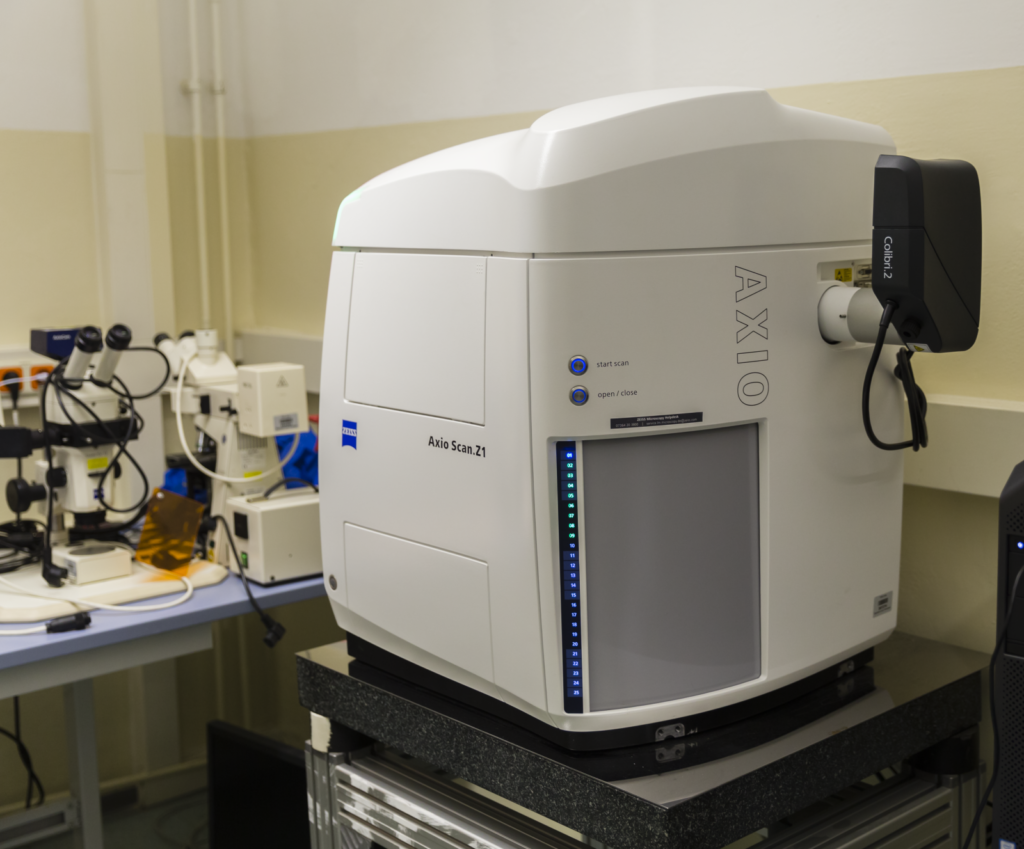
ZEISS Axioscan 7 slide scanner in the Jena Phyletic Museum -
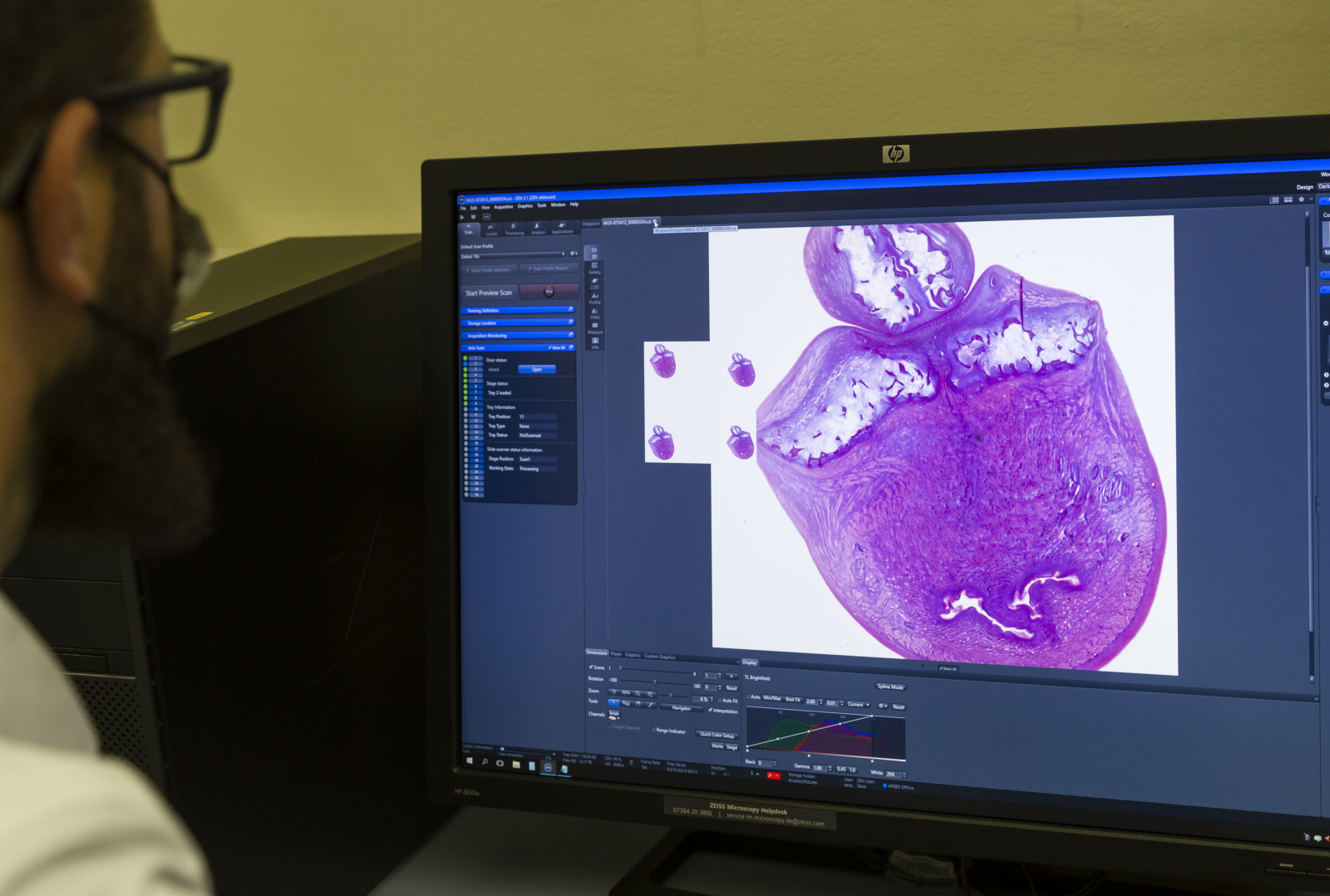
Imaging and digitization of the elephant embryo slides
The institute will also establish a central database to make these virtual slides accessible to the global scientific community along with sharing their best practices for digitization of biological thin sections. A grant application for support by the German Research Association (DFG) is currently under review.
“Making know-how and knowledge accessible worldwide, creating transparency in scientific research, supporting and consulting other teams is my ultimate goal. To establish a real competence center for histologic thin sections and bring all the hidden treasures from museum archives to light, this is what scientists like me are living for.”
Professor Martin S. Fischer
In the wake of Ernst Haeckel and beyond
Ernst Haeckel was a scientist and founder of the Jena Phyletic Museum (1907). Haeckel regarded partnerships with industry to be important for the advancement of science and was also cooperating with ZEISS at the time. Fischer’s project follows in Haeckel’s footsteps, partnering with ZEISS to make new discoveries.
Additionally, a collaborator of Fischer’s just made an amazing discovery. While cleaning up the attic of the museum, a cupboard with 400 slides originating from Haeckel was found under the 50,000 insect samples waiting to be digitized. These medusae and polyps, most of them collected during the Challenger expedition of 1872–1876 by John Murray, and most likely hand-labeled and lovingly sorted by Haeckel himself, now await their systematic cataloguing and digitization. The formats of the slides are uncommon and their stains faded. Despite the diverse range of sections stemming from different biological areas and questionable conditions, the researchers are enthusiastic to get started. “Recognizing and reconstructing old slides and stains is conservation of biological sections.” – says Fischer, eyes shining.
-
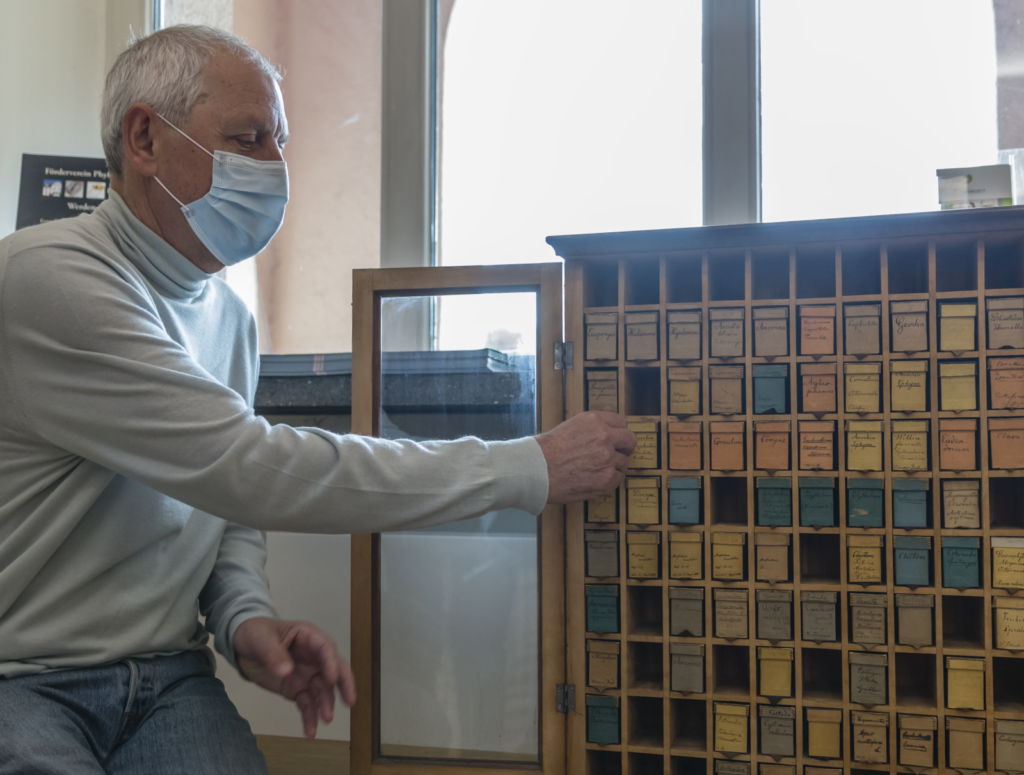
Prof. Fischer revealing the original Haeckel slides from the 19th century -
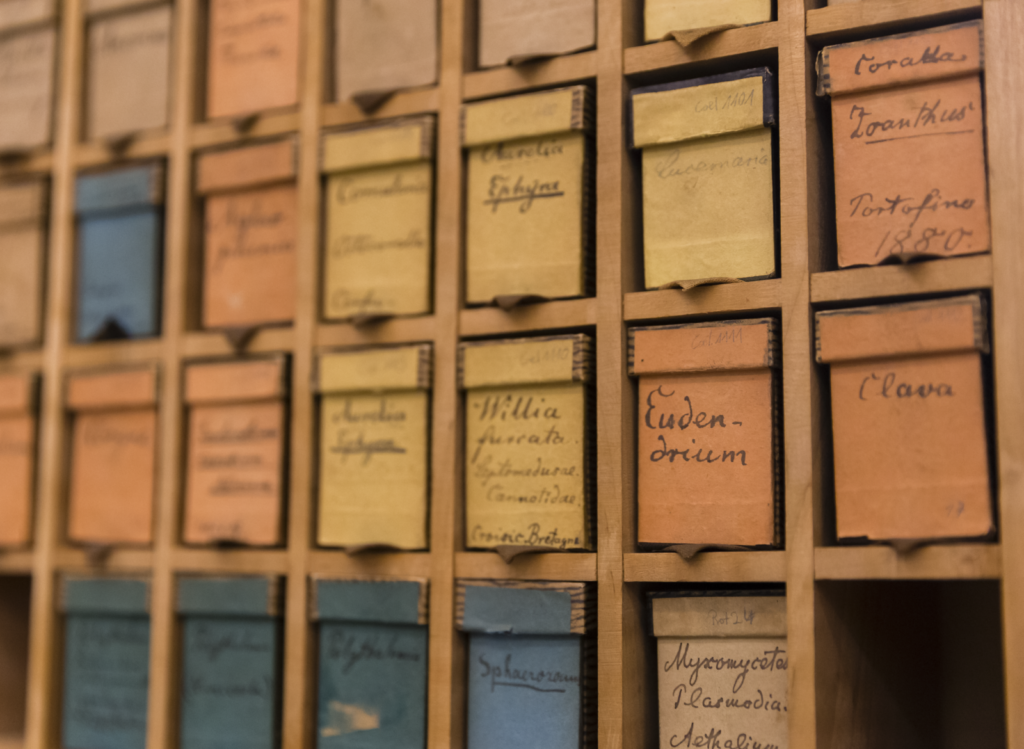
In this shelf, the Haeckel slides were found -
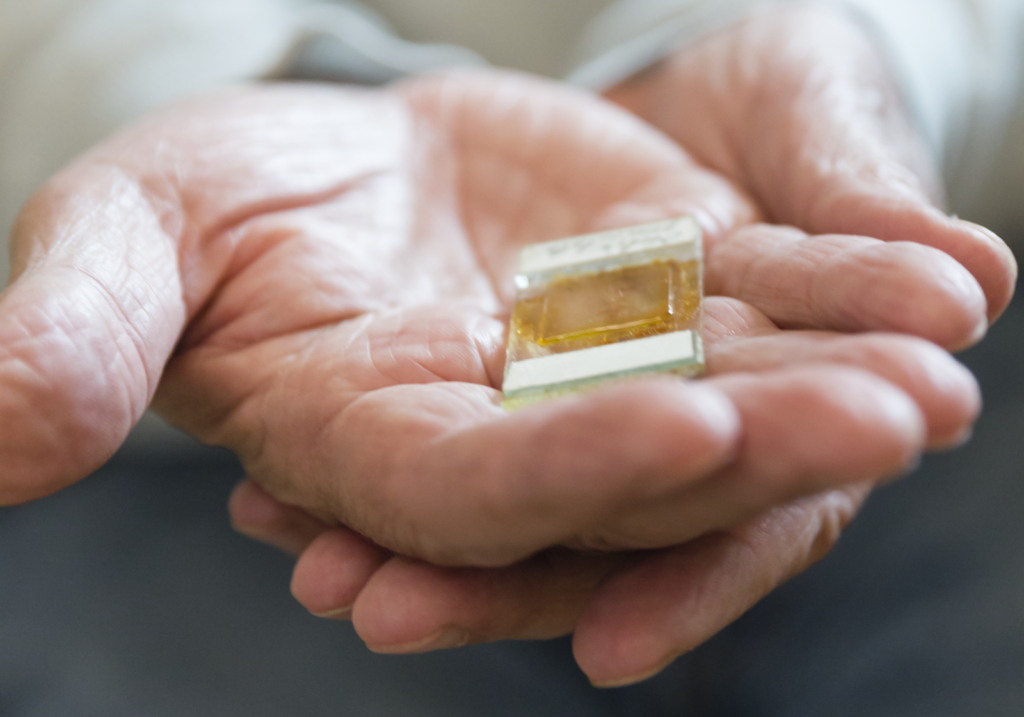
Prof. Fischer showing one of the Haeckel slides from the attic
However, due to the thickness, the old slides cannot be digitized with ZEISS Axioscan 7. Together with Fischer’s team, ZEISS is working on a creative solution to automatically digitize these slides at good image quality. Stay tuned!
Founded by Ernst Haeckel, the Jena Phyletic Museum is a globally unique institution. It is not just a natural history museum, but a place dedicated to illustrating the development of life. Its main areas of focus are phylogeny and evolution as well as celebrating the meeting of art and nature.
The Jena Phyletic Museum was set up using donated funds; the foundation stone was laid on Johann Wolfgang von Goethe’s birthday on August 28, 1907. On July 30, 1908, Haeckel consigned the building to the Friedrich-Schiller University on the university’s 350th anniversary. Today the museum forms part of the university’s »Institut für Spezielle Zoologie und Evolutionsbiologie« (Institute of Systematic Zoology and Evolutionary Biology). It accommodates extensive zoological and paleontological collections comprising more than 500,000 specimens. The history of the collections dates back to the 18th century. Some of the most important specimens originate from the period when Goethe (1749–1832) curated the anatomical-zoological collections.
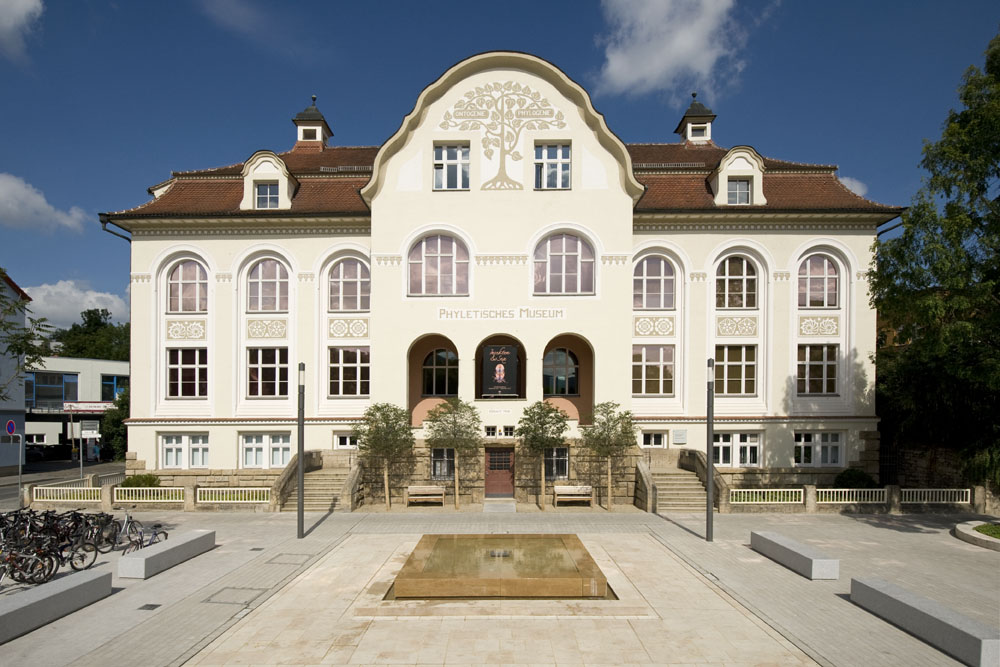
Read more:





